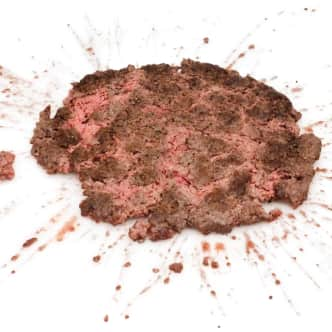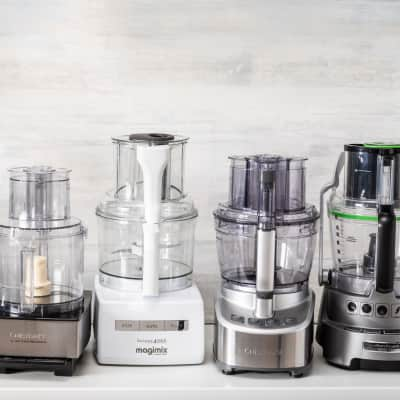For me, a truly great burger is not only ultra-beefy and juicy, it’s so tender your teeth glide through the meat like it’s butter.
A Good Burger Goes Splat
Published July 13, 2022.

And the only way to ensure that kind of tenderness is to first grind the meat yourself, then take care in how you shape the patty.
Sign up for the Cook's Insider newsletter
The latest recipes, tips, and tricks, plus behind-the-scenes stories from the Cook's Illustrated team.
Grinding your own meat allows you to control the cut and how finely you grind it, both of which make a huge difference to the flavor and texture of the burger. The beef should be a flavorful, well-marbled cut; and it should be ground fine enough that it holds together when formed into patties, but coarse enough that it doesn’t pack too tightly and become dense.
Proof Positive: The Tenderness Test
Want visual proof that a burger made with home-ground beef is more tender? Check out this smashing test: We dropped a Dutch oven on top of two burgers—one made with commercial ground beef, the other with meat we ground ourselves—from 6 inches above.


A truly tender burger (left) will flatten and splatter under the weight of a Dutch oven, while a denser patty (right) will more or less retain its shape.
Grind Burger Meat in a Food Processor
The good news is, you don’t need special equipment to grind meat—just a food processor and access to a freezer. Here’s an overview of our process.
- Use the Best Cut: Unlike chuck, which is often used for commercial ground beef but contains lots of connective tissue that must be removed before grinding, we use sirloin steak tips (or “flap meat”), which are well marbled and require little trimming.
- Trim and Cut: After removing any excess fat and gristle, cut the meat into ½-inch chunks, which will process evenly during grinding.
- Add Butter for Juiciness: The fat in butter helps burgers cook up super juicy, and the butter’s protein encourages browning. To ensure that the butter pieces are consistent and evenly distributed, cut the butter (2–3 tablespoons per pound of meat) into small cubes.
- Freeze Beef and Butter: To firm up the meat and butter before grinding, freeze the pieces on a plate or rimmed baking sheet in a single layer for about 30 minutes. That way, the food processor cuts them cleanly instead of smashing them, which leads to pasty, dense results.
- Work in Batches: Process the beef and butter in small batches, stopping to redistribute them around the bowl as necessary, to ensure a precise, even grind.
Gently Shape the Patties
The more you handle ground meat, the more its sticky proteins (which are released by grinding) will link together and the tougher the burger will be. So it’s important to manipulate the meat as little as possible when forming patties.
- Portion: Divide ground beef into equal-size balls.
- Pack: Toss each ball between your hands until lightly packed.
- Press: Flatten into patties.



